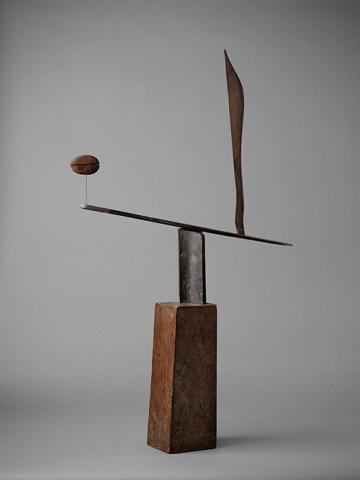For the month of September the Kunstmuseum Liechtenstein is featuring Pennsylvania artist Alexander Calder as its artist of the month. His untitled work from 1935 is part of the collection of the Hilti Art Foundation which opened its own building a year ago opened as an extension to the Kunstmuseum.
From the Kunstmuseum's website:

Alexander Calder
*1898 in Lawton/Pennsylvania, † 1976 in New York, USA
Untitled, 1935
Wood, wire
102.4 × 60 × 19 cm
Hilti Art Foundation
We associate the art of Alexander Calder primarily with large and small mobiles that playfully keep forming new configurations. He is equally well known for the towering, imposing stabiles that have invested numerous public spaces with life since the 1950s. With the exception of his famous Cirque Calder, 1926–31, the works that he made in the days of Surrealism are not as well known although they are seminal to his subsequent oeuvre. While living in Paris in the early 1930s, Calder frequently met with such artists as Joan Miró, Jean Arp, Fernand Léger, Piet Mondrian, and the uncompromising head of the Surrealists, André Breton.
In 1933, Calder returned to the United States for a few years, where he purchased a farmhouse some 100 kilometres north of New York. The present work from 1935 was made during this period, using items that happened to be in his studio at the time. The pieces of wood in different colours were left in their original, raw state. Such “objets trouvés” establish a link between art and real life. They are relics of daily life now embodied in the work of art.
The present work consists of a precarious wood construction placed on a slender square pedestal. A board lies at a slant on a narrow, semi-circular piece of wood, possibly from the back of a chair. On the board, Calder has balanced an undulating piece of wood tapered to a point at one end and an oval wooden shape mounted on a metal wire at the other. The two objects are related and communicate with each other; they resemble parts of a plant. The leaf growing upwards and the nut-shaped fruit represent the cycle of nature, in visual tribute to processes of growth and transience. The phallic shape of the board and the female, ovular shape of the wood represent in turn the male and female elements and the fragile balance between them, for it seems that they could collapse at any moment.
